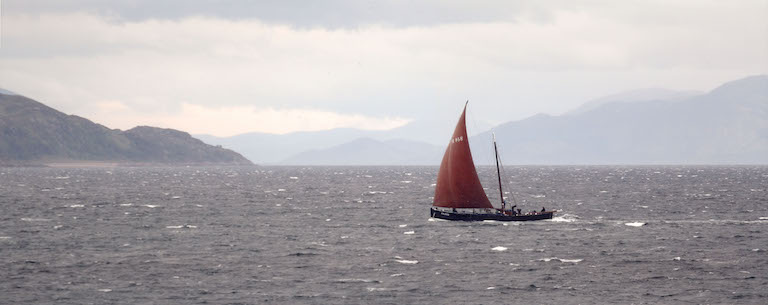The buildings which house the Museum, in the main, date from the 16th - 19th centuries, the original core of which surround a cobble-stone courtyard. The courtyard itself has been associated with fishing since at least the 14th century and comprises part of the original land gifted by the then Laird of Anstruther, William de Candela, to the Abbot of Balmerino in North Fife, in 1318. The Abbot subsequently leased the area to the local townsfolk to enable them to sell or cure their fish, to dry and repair their gear and to bark their lines and nets in order to prevent rotting by exposure to salt water. In return, the Abbey was given a barrel of one hundred salt herring from each of the townsfolk’s catches.

Museum Courtyard, north side
Around the courtyard, buildings of historic interest survive. The building on the east side of the Courtyard was built in the 16th century by a Thomas Wood after the land was feued to him by the Abbey in 1535. In return, the Abbot used it as a residence while staying overnight on his pilgrimages to the May Isle (an important religious shrine dedicated to St Adrian and on the pilgrim route to St Andrews). Known as the Abbot’s Lodging, it now houses the Fisherman’s Cottage display.
The northern side was, in the 15th century, home to a small chapel dedicated to St Ayle. Sy Ayle is thought to be St Agilus, a monk from Burgundy and follower of St Columban. After the Reformation, the building fell into disrepair and was dismantled around 1850 to make way for the construction of a storehouse. Luckily, a clerestory window was saved and was built into the new structure.
On the west side, there is an old Merchant’s House, dating from the 18th Century. The marriage lintel can still be seen above the door and reads: WL HD 1721. It was built by William Lumsden and eventually became a Ship Chandler’s Business. The last private owner of the site was Alex Cunningham who operated the chandlery and leased other parts of the site as workshops and fishermen’s stores.

Smith and Hutton Boatyard 1968
The Museum expanded from its original core in the late 1970s and 1980s, taking over two adjacent 19th century houses in East Green. These were followed in the 1990s by the next cottage along (dating from 1746) and the former Smith and Hutton Boatyard, now the home of the Museum’s historic boat collection. The last addition was the former Sun Tavern and adjoining land, including a cooperage and smokehouse, which was opened as the Zulu Gallery in 2000.
These various buildings have all been linked internally to create a seamless and atmospheric circuit around the galleries. Their traditional and modest external appearance leads many visitors to be surprised at the extent of the Museum displays concealed within.























